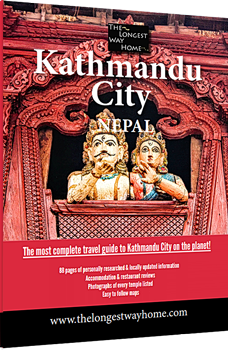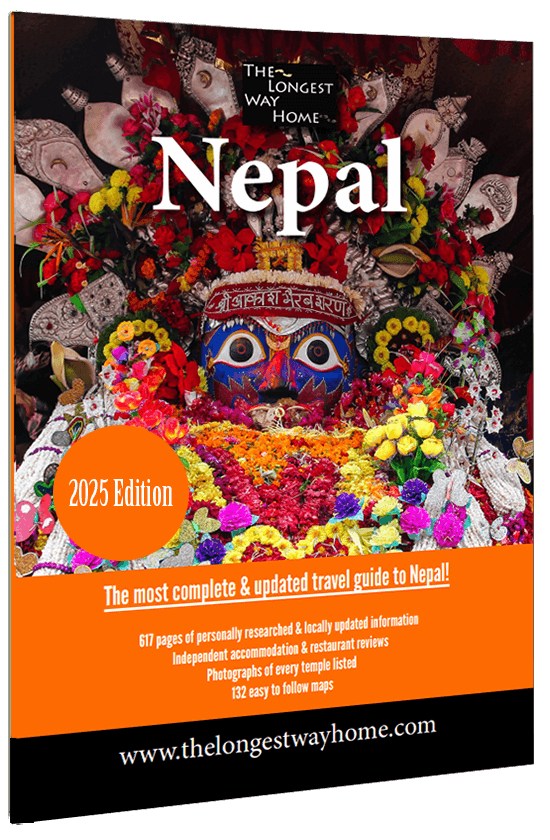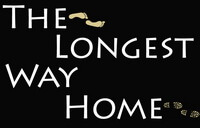About the Nepali Rupee Currency

Nepal's official currency is the Nepalese Rupee or NRP & Rs.
The Nepalese Rupee comes in 1, 2, 5, 10 coins and 20, 50, 100, 500, and 1000 rupee notes.
There are smaller coins called "paisa" which you will come across but really never used. They come in 1, 5, 10, 25, 50 paisa coins.
Large denominations of Nepalese rupee have their own names. 100,000 Nepalese rupees is known as 1 lakh. 200,000 is known as 2 lakh, and so on.
2,000,000 Nepalese rupees is known as 2 lakhs.
It's the "S" at the end that's important to remember. In millions, add it; in one hundred thousands, don't.
Note: Up until about 12 years ago, Indian Rupees were accepted in many parts of Nepal as regular cash with their own valuation in exchange for goods. That is no longer the case. Indian rupees will often be accepted but only after being converted to Nepali Rupees via current currency exchange rates.
Where to get your money in Nepal?
One of Nepal's premium industries is tourism. Therefore, there are many ways to get your cash converted to Nepali rupees throughout the main cities in Nepal.
However, Kathmandu remains the most popular place to obtain your money from home. If you are bringing cash from a lesser-known currency, it's best to change it in Kathmandu city's (Thamel area) rather than anywhere else.
The main ways to obtain Nepali Rupees are: ATMs, money exchangers, cash advance credit cards, and wire services.
Major cash currencies for converting to Rs include: USD, GBP, EURO, YEN, and Indian Rupee. Most other well known currencies are accepted but stick with well known currencies and converting them to rupee in Kathmandu rather than Pokhara or other smaller cities.
Do note, that even though other currencies will be accepted - if not many people from that country visit Nepal then the exchange rate will be much lower. For example the Mexican Peso will be a longshot for converting to Nepali rupees. Thai Bhat can be converted, but the exchange rate is not that good. In these two cases, it's best to change your money at home to USD.
Nepal FOREXs are not that concerned with USD bills have creases in them compared to some other countries. Tears in bills may also be accepted but you will be given a lower exchange rate. It's best to have reasonably good quality notes. Lesser known currency notes with marks or damage are more likely to get lower exchange rates or be refused.
While generally a safe country, be careful at night or in crowded streets if accessing an ATM. Likewise, on treks where you need to carry large quantities of cash - don't leave it unattended in your room.
Using ATMs in Nepal
Automated Teller Machines are available throughout Nepal. However, only Kathmandu and Pokhara have regular "working" machines that accept international cards. Throughout the rest of the country, they exist for National banks, but not all International bank cards are accepted.
Popular ATMs that accept international credit cards (VISA, MasterCard) in Kathmandu and Pokhara include: Standard Chartered, Everest Bank, Nabil Bank & Himalaya Bank. Cash is given out only in Nepali Rupees.
Cirrus and American Express debit cards will need to be checked individually as they each have different relationships with national banks. Ask your own bank who they recommend to use in Nepal before leaving.
The best places to try ATMs are around Thamel in Kathmandu and Lakeside in Pokhara where there are "ATM Lounges". These are shown in my Nepal guidebook.
How much money can you withdraw from an ATM in Nepal?
There are limits on how much you can withdraw from an ATM in Nepal per transaction. The limits range from 10,000 rupees to 30,000 rupees depending on the bank. Do remember there's a fee for withdrawing from an ATM in Nepal.
Is there a fee for withdrawing money from an ATM in Nepal?
Yes, there is a 500 rupee fee for withdrawing any amount from an ATM in Nepal. So if the ATM you are using only allows a 10,000 rupee withdrawal, you will be charged 500 rupees for each transaction. It therefore makes sense to use a bank with a high withdrawal amount. These banks are listed in my Nepal guidebook.
Are there ATMs available when trekking in Nepal?
There are some ATMs in large trekking towns like Namche Bazaar (Everest Base Camp route) and Jomsom (on the Annapurna circuit trek), however, they are not reliable. Between weather issues, telecommunications, and actually stocking the ATMs, it's best to not depend on them at all.
Getting your cash in Kathmandu or Pokhara before going trekking is a far simpler, safer, and easier option.
Since 2015, ATMs in Kathmandu's Thamel area and Pokhara's Lakeside are generally found in groups within one dedicated area called an "ATM Lounge". These usually consist of 4-5 ATM machines from different banks in one room. A map with these ATM lounges can be found in my Nepal guidebook.
Do be aware of electrical power failures when using ATMs.
Using Travellers Cheques in Nepal
Travellers cheques are rarely accepted in Nepal anymore. The only possibility is to cash your cheques in any of the main (Foreign Exchange) FOREX offices in Kathmandu's Thamel area. Be sure to ask if they are taking commission when cashing them in. And be sure to bring your passport and other necessary identity documents when cashing them in. All in all, it's not worth getting travellers cheques for Nepal anymore.
Using Credit or Debit Cards in Nepal
Download my guidebook and get the full details
It's only $4.99 USD to download the entire Kathmandu city guidebook now
Or get Kathmandu city plus all of Nepal in a premium guidebook for only $19.99
Also available in paperback


or
Get the Nepal Guidebook $19.99Credit or debit cards can be used in many of the major stores, hotels, restaurants, tour agencies, and banks. Do be aware of commissions can be added. And don't leave your credit card unattended with anyone no matter their excuse.

All major credit and debit cards are accepted in Nepal. These include VISA, MasterCard, Cirrus, and American Express. Do be aware that not all of these cards will work in some of the ATMs. There are small signs in a few ATMs saying what will work. It's best to stick with the larger international banks than the smaller regional banks for withdrawing cash.
When paying for tourist activities, hotels, flights, treks, or goods in person by credit card, you should be aware of certain things. Some older retail stores still use old-style carbon copy machines.
Do not leave your credit card with anyone. Electricity blackouts are common in Nepal and many genuine people and not so genuine will ask you to leave the card with them until later. It's much better to take the card with you and come back later yourself rather than leave it there. Ignore blogs and the like saying there is no problem. Electricity outages are indeed still frequent which cut out the satellite communications of banks. It's normal and has been happening for years. Moral of the story - use an ATM when it's not on a generator!
Additional Charges!
If paying for meals in restaurants do be aware of additional charges such as VAT and service charges along with credit or debit card fees and currency exchanges. You could be spending a lot more than you think. Usually a 4% addition is added by Nepali banks, but it will vary. If possible, check after you use your card. Tap and Go services do work where the facilities allow - just be sure that it is accepted or declined in front of you.
You will be able to pay for a trek in Nepal by paying a trekking company or guide with a credit or debit card. However, it may not be worth it. Many treks need to be paid for upfront and you will likely be charged between 3 to 5+% extra for using a card to pay due to Nepali bank charges. You will often save money by paying in cash when you arrive depending on the amount needed. There's a USD$10,000 limit on the amount of cash you can bring into Nepal. Most people, pay by cash when they arrive in Nepal and meet the trekking agent.
Paying for things in Nepal by cash is generally safer than by debit or credit Card. If going to Nepal with a credit card make sure you notify your credit card company first as many have Nepal on a blacklist and might cancel your card if you start to use it in Nepal without letting them know.
Bank Transfers in Nepal
It is very common for a local Nepali guide or company to request a deposit for their services using a bank transfer to Nepal. It avoids wire or credit card fees at both ends.
Guides generally request the bank transfer deposit for securing permits and domestic flights where applicable.
It can take up to 5 working days for a bank transfer to Nepal. Keep in mind Nepal has several annual holidays throughout the year. Nepali tour operators or trekking agents often use Wise for faster transfers. If they request a Wise (or similar money transfer agent), then setting up an account with the likes of Wise would be best.
Also, keep in mind that your bank may well deduct a fee for an international transfer. As such, that $500 deposit you sent may result in the trekking agency getting $450. Do check with your bank if they charge for international transfers before sending and adjust accordingly.
Money Wire Services in Nepal
There are several money wire services available in all major cities in Nepal. However, Kathmandu is the preferred option for many tourists.
While Western Union is the most popular, there have been several other services opening up in recent years. In either case, you'll likely be dealing with an agent rather than an official wire transfer office.
The most important question to ask is what are their commission rates?
Be sure to also ask for their exchange rate fees and international fees if they exist.
It is not possible to send money out of Nepal by wire or bank transfer. It is only possible to accept incoming transactions.
Crypto Currency in Nepal
Crypto currency like Bitcoin is still illegal in Nepal. While some enterprising locals do use it, tourists are discouraged from doing so.
Mobile Payment Apps / E-wallet Payments in Nepal
App or e-wallet payments like Google Pay or Apple Pay still don't function in Nepal. However, some enterprising Nepali business have brought international payment gateways into Nepal and accept them. I would not be spending large amounts using Google Pay or Apple pay until they become official.
Other payment apps or e-wallets can work by using the Nepal Pay QR code. These include mobile payment apps from China's Alipay, Hong Kong's AlipayHK, Italy's Tinaba, Macau's MPay, Malaysia's Touch 'n Go e-wallet and MyPB, Mongolia's HiPay, the Philippines' GCash, Singapore's Changi Pay and OCBC Digital, South Korea's Kakao Pay, Naver Pay and Toss Pay, and Thailand's Truemoney.
All of these play second fiddle to Nepal's own home-based App payments like E-Sewa which require a difficult to obtain Nepali bank account. Chinese payment apps like Ali Pay have been accused of illegal money trafficing in Nepal in the past.
Money Changers in Nepal
There are plenty of Money Changers in Nepal's tourist areas, and they are known as either "Money Changers" or "Foreign Exchange (FOREX)." All major currencies are accepted. Many medium-sized currencies are accepted. And many minor currencies are also accepted, though you might have to wait a while.
Morning rates are often posted outside of the money changer storefronts every morning. The rates don't vary much at all between stores, and usually, if you think you are getting a good bargain, they'll recalculate as you hand them your money. Ask what the exchange rate is first and if they charge a commission. Avoid hotels or the airports for changing money.
Again, recommended money changers are listed on the Thamel map in my guidebook to Nepal.
Should you tip in Nepal?
No. Tipping is not a custom in Nepal, though it would be very rare for anyone to turn a tip down. In all major hotels or restaurants, there is a mandatory 13% VAT charge and a service charge of 10%. Service charges equal a tip!
In smaller local cafes, you will not see this charge.
Due to "western" influence, trekking staff such as guides or porters have become accustomed to expecting a tip. It's mandatory here and not a requirement. If you've had a good service, use your discretion.
If you are interested in knowing about how much a local earns in Nepal, do read my article on How much does someone from Nepal earn?
Download my guidebook to Nepal
Liked this page? You'll love my book! This is a hands on guidebook that is better than the rest and far more up to date. Yes, really! In it I cover all attractions with step-by-step accuracy using well researched information, photographs and travel tested walking tours.
Available in print or digital editions - the best guidebook for visiting Nepal.
Was this page helpful to you? If so please tell others!


